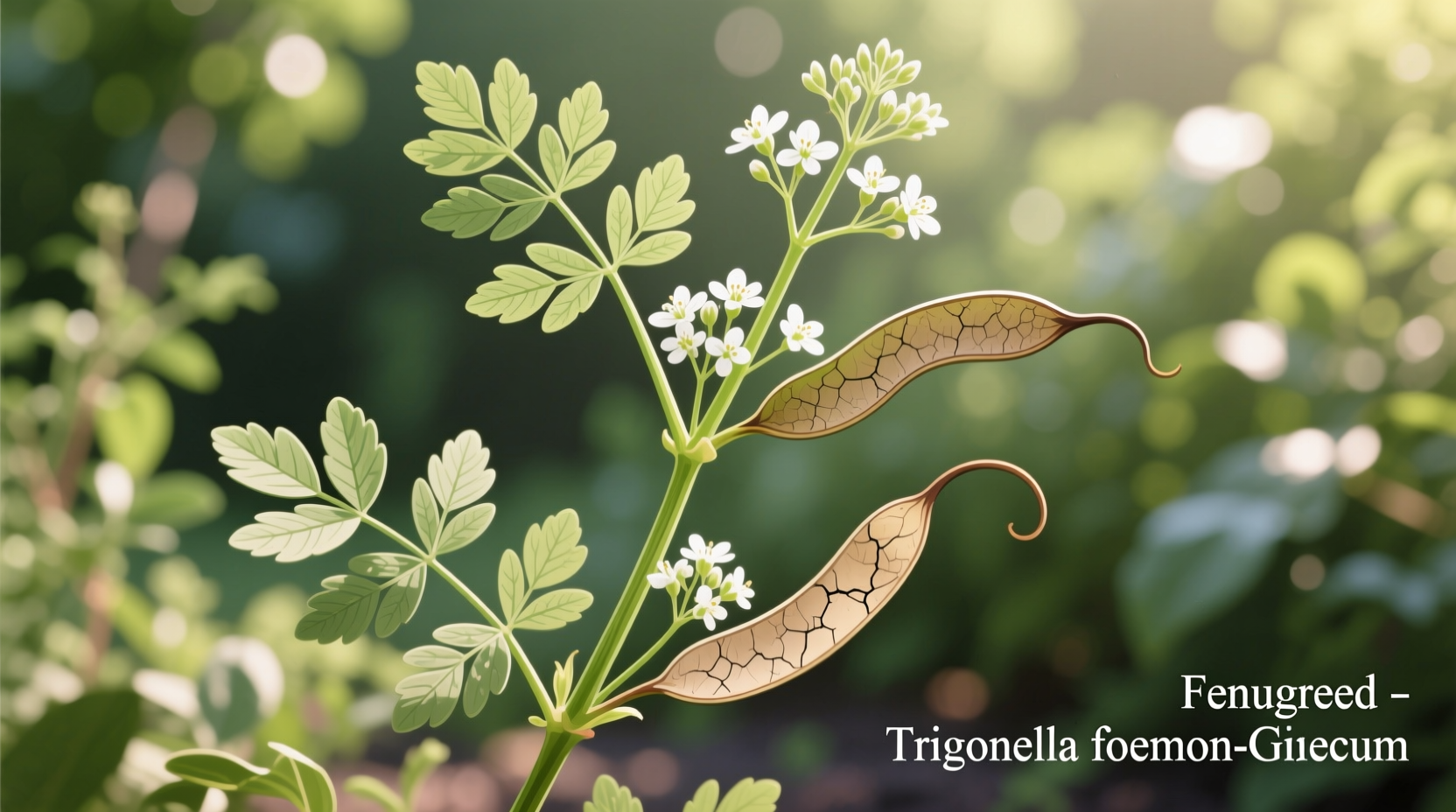When you ask what is the fenugreek, you're exploring one of the world's oldest cultivated spices with remarkable versatility. This comprehensive guide delivers exactly what you need: clear identification, historical context, flavor characteristics, and practical usage information without overwhelming you with unnecessary details.
Tracing Fenugreek's Historical Journey
Fenugreek's story begins in the Fertile Crescent, where archaeological evidence confirms its cultivation dating back to 4000 BCE. Ancient Egyptians used it for embalming and as a medicinal herb, while Sanskrit texts from 1500 BCE document its role in Ayurvedic medicine. The spice traveled along early trade routes, reaching China by the 1st century CE where it became integral to traditional Chinese medicine practices.
Fenugreek Through the Centuries
- 4000 BCE: Earliest cultivation evidence in Mesopotamia
- 1500 BCE: Documented in Ayurvedic medicine texts
- 1st Century CE: Introduced to China via Silk Road
- 16th Century: Brought to North America by European colonists
- Modern Era: Global production exceeds 100,000 metric tons annually
Identifying Fenugreek: Physical Characteristics
Fenugreek presents in two primary forms that often confuse newcomers. The small, amber-colored seeds (about 3mm long) have a distinctive triangular shape with a deep groove running down the center. Fresh fenugreek leaves resemble clover with light green, oval-shaped leaflets arranged in triplets. When dried, the leaves become brittle and take on a more yellowish hue.

Global Production and Culinary Significance
India dominates global fenugreek production, accounting for approximately 80% of the world's supply, primarily grown in the states of Rajasthan and Gujarat. Other significant producers include Sudan, Egypt, and Morocco. This distribution pattern directly influences regional culinary applications:
| Region | Primary Use | Distinctive Application |
|---|---|---|
| India | Curry bases, spice blends | Essential in sambar and fish curry |
| Middle East | Bread, pickles, stews | Key ingredient in Yemeni hilbeh dip |
| Mediterranean | Vegetable dishes, cheese | Traditional addition to feta cheese |
Understanding Fenugreek's Flavor Profile
Fenugreek seeds deliver a complex flavor experience that evolves dramatically with preparation. Raw seeds possess a pronounced bitter taste with subtle maple-like notes. When properly dry-roasted, they transform into a warm, nutty, caramel-like flavor that forms the backbone of many curry blends. Fresh fenugreek leaves (known as methi in India) offer a milder, slightly sweet bitterness reminiscent of celery leaves with a hint of savory depth.
Nutritional Composition and Traditional Applications
Nutritionally, fenugreek seeds pack impressive density. According to USDA FoodData Central, one tablespoon (6.7g) of fenugreek seeds contains:
- 23 calories
- 3g dietary fiber (11% of daily value)
- 1g protein
- Significant iron (12% DV) and magnesium (7% DV)
- Substantial amounts of vitamin B6 and selenium
Traditional medicinal systems have utilized fenugreek for various purposes across cultures. Ayurvedic practitioners have historically recommended it for digestive support, while traditional Chinese medicine incorporated it for warming properties. It's crucial to understand that while these traditional applications exist, modern scientific validation varies significantly by claimed benefit.
Practical Culinary Implementation
Mastering fenugreek in your kitchen requires understanding proper preparation techniques. For seeds, always dry roast them in a skillet over medium heat for 2-3 minutes until they release a maple-like aroma and darken slightly. Never skip this step—raw fenugreek seeds will impart unpleasant bitterness to your dishes. When using fresh leaves, add them toward the end of cooking to preserve their delicate flavor.
Start with conservative quantities—fenugreek's flavor can dominate other ingredients. For most curry applications, 1-2 teaspoons of roasted, ground seeds suffices for four servings. In baking applications where fenugreek mimics maple flavor, use just 1/4 to 1/2 teaspoon per recipe.
Storage Recommendations for Maximum Freshness
Preserve fenugreek's volatile compounds by storing whole seeds in an airtight container away from light and heat. Properly stored, they maintain peak flavor for 12-18 months. Ground fenugreek loses potency more quickly—use within 6 months for best results. Fresh fenugreek leaves should be treated like other delicate herbs: wrap in slightly damp paper towels and store in the refrigerator's vegetable drawer for up to five days.
Common Questions About Fenugreek
Many home cooks encounter similar challenges when first working with fenugreek. Understanding these practical considerations helps avoid common pitfalls and maximize this spice's potential in your cooking.











 浙公网安备
33010002000092号
浙公网安备
33010002000092号 浙B2-20120091-4
浙B2-20120091-4